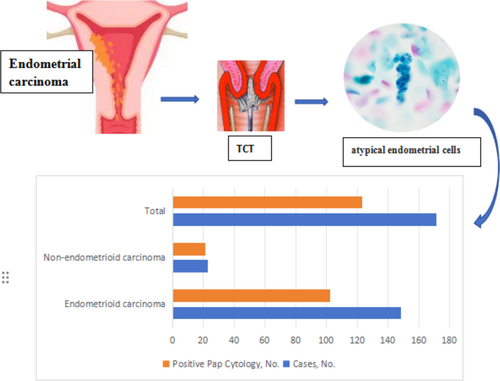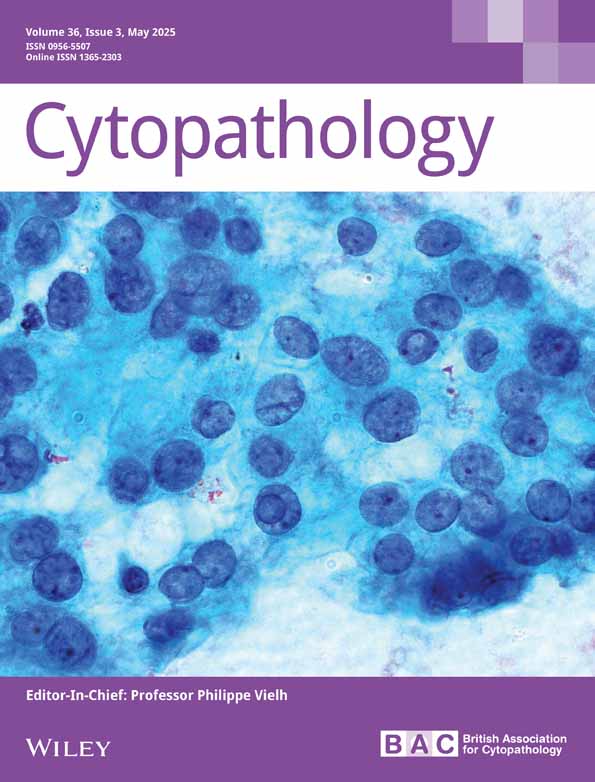Diagnostic Value of Liquid-Based Cervical Cytology Test in Endometrial Carcinoma
Tingting He & Shuiping Xie are joint first authors.
ABSTRACT
Background
Abnormal endometrial cells could be detected by liquid-based cervical cytology test due to the anatomical continuity of the uterine cavity with the cervix. Our aim was to evaluate the diagnostic value of Papanicolaou (Pap) test in endometrial cancer (ECa).
Methods
ECa cases with liquid-based Pap smears within 6 months before the histological diagnosis were retrospectively searched from an academic women's and children's hospital pathology archive. Corresponding smears were reviewed, and clinicopathological parameters and Pap test results were recorded.
Results
A total of 171 cases were identified. Among these patients, 43 (25.1%) cases were interpreted as abnormal, 32 (74.4%) of which suggested glandular abnormality in the routine screening (initial Pap smear reports). After re-examining all slides, 123 (72.5%) cases showed the presence of endometrial abnormality. Among these, 87 cases (70.7%) were diagnosed as atypical endometrial cells (AEC), 33 cases (26.8%) as adenocarcinoma (ADC), and 3 cases (2.4%) as benign endometrial cells. The cases with non-endometrioid histology were more likely to be interpreted cytologically as ADC, while endometrioid subtypes were often diagnosed as AEC (p < 0.05). Except for the tumour type (p < 0.05), the other clinicopathological factors were not significantly related to a higher percentage of positive Pap test results, including age, histological grade, myometrial invasion, cervical involvement, lymphovascular invasion, and FIGO stage(p > 0.05).
Conclusion
Pap test plays a role in the detection of ECa. Detection could be improved in routine screening by paying more attention to endometrial lesions in high-risk populations.
Graphical Abstract
Conflicts of Interest
The authors declare no conflicts of interest.
Open Research
Data Availability Statement
The data that support the findings of this study are available on request from the corresponding author. The data are not publicly available due to privacy or ethical restrictions.





